
I first became aware of the necessity of pruning perennials in the summer when I came back from an early-July vacation to a wild garden that was quickly getting out of hand.
Our house sitters, while very diligent about taking care of our home and our pets, were under express instructions not to touch the garden (except for watering).
The main reason was that I was running a few experiments in the garden. But truth be told, I knew our gardening styles didn’t mesh very well. I prefer to keep a more organic-looking messy garden, so I didn’t want to have any pruning done in absentia. But even with my love of messy cottage gardens, it was clear that some of my perennials needed a summer pruning.
So I spent my first few days back diligently cutting back lavender, lemon balm, geraniums and nepeta, to name just a few. Truth be told, it was a great re-entry into day-to-day life and gardening chased away the inevitable post-vacation blues.
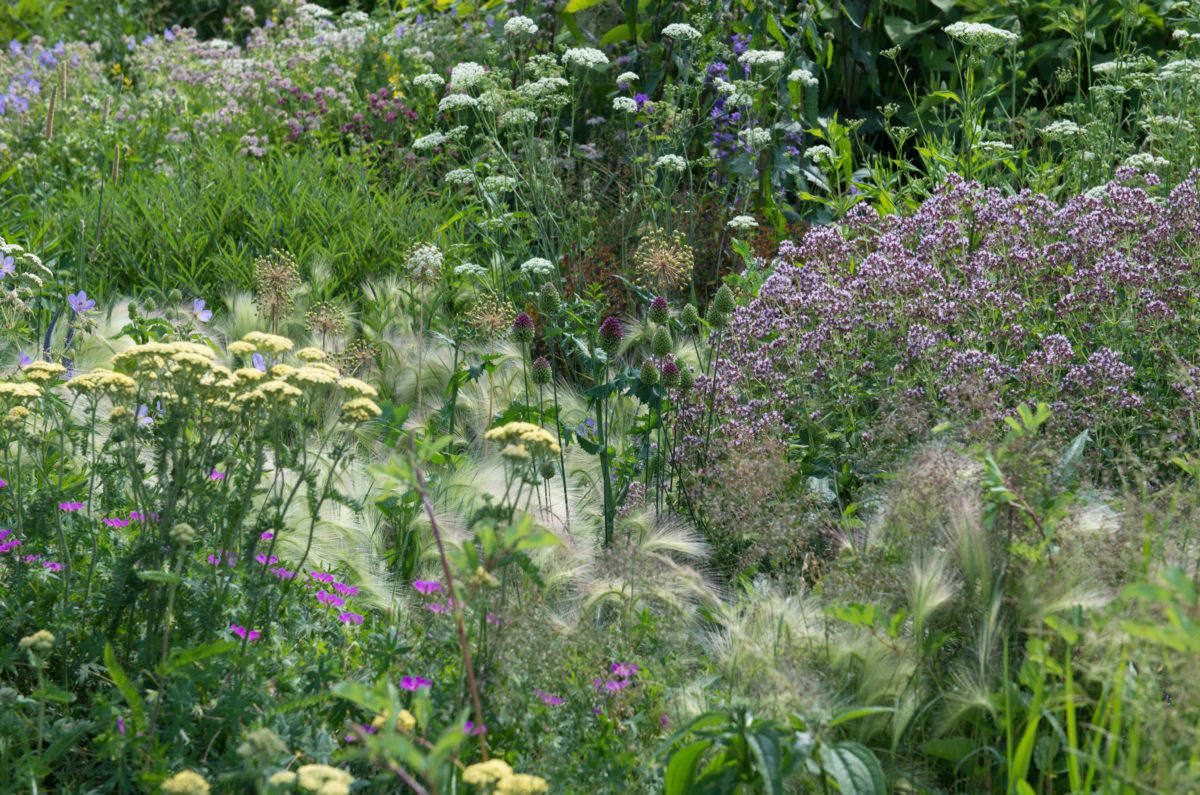
If you’re also wondering whether you can prune plants in the summer, the answer is yes. But if you’re thinking “Isn’t summer the season I’m supposed to relax and just let the garden be?” then the answer is also yes. You don’t have to prune your plants in the summer, but here are a few of the reasons why you may want to pull out the secateurs in July.
What are the benefits of summer pruning?
Summer pruning reinvigorates plants and encourages new growth.
Perennials that are early bloomers (late spring and early summer) will often stop growing once the blooms are spent. A summer pruning session that removes old stems and dry foliage will often restart a plant’s growth. So instead of ending up with brown leaves in the middle of your summer garden, you’ll often get a new flush of green replacing the old.
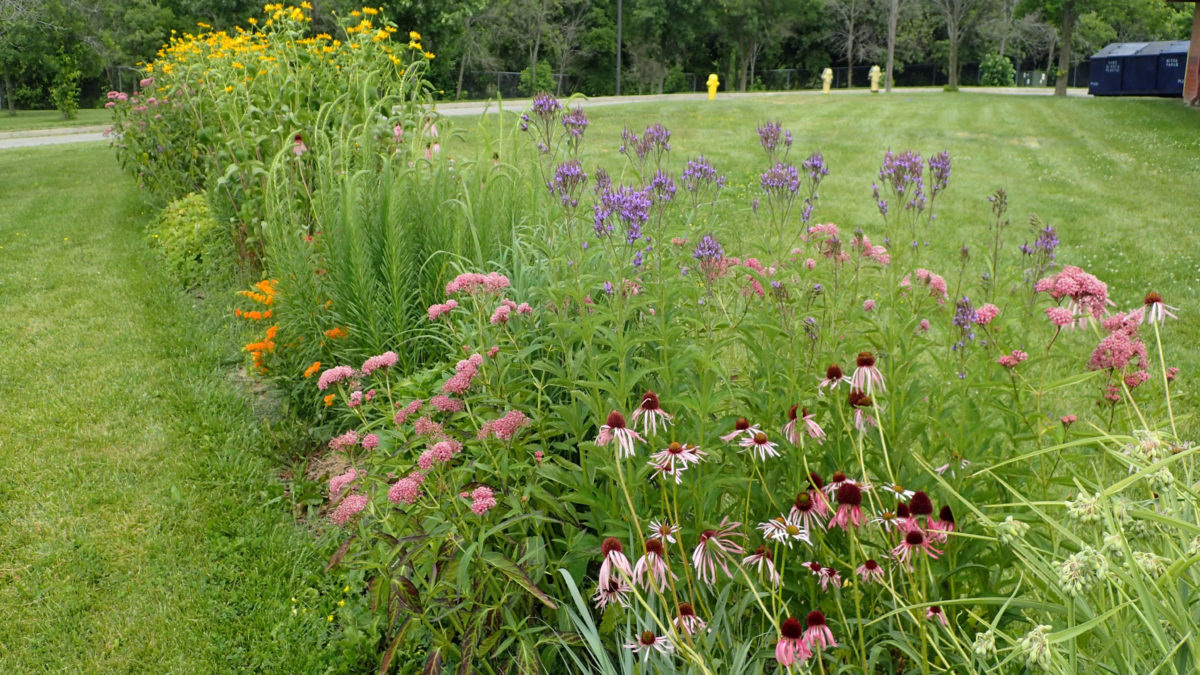
Summer pruning helps your garden look tidier.
In addition to deadheading (removing the dead blooms), some plants may need some light pruning in order to look neat and tidy. This is especially the case for plants that keep growing tall and leggy all through the summer, such as lavender.
Some gardeners may prefer a messy garden, while others are very strict about order and organization. I feel that the middle of these two extremes is a good goal, with plants not overcrowded and competing for space and with each plant having its place in the spotlight when it’s looking its best.
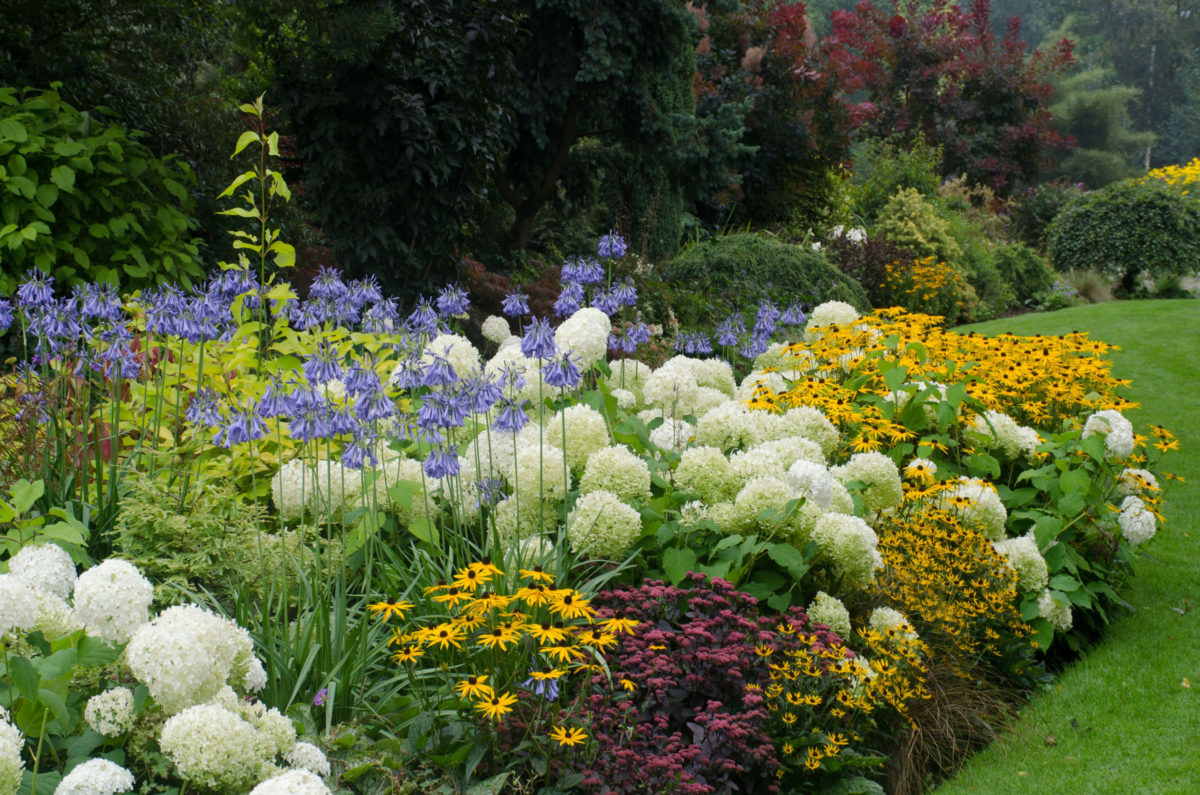
Summer pruning encourages repeat blooming.
Obviously, perennials do bloom every year, but the term “repeat blooming” refers to getting two consecutive blooming periods during the same growing season. Plants such as nepeta, yarrow and hardy geraniums will often get a new set of blooms after pruning. Extending the flower season is a great way to get more bang for your gardening buck.
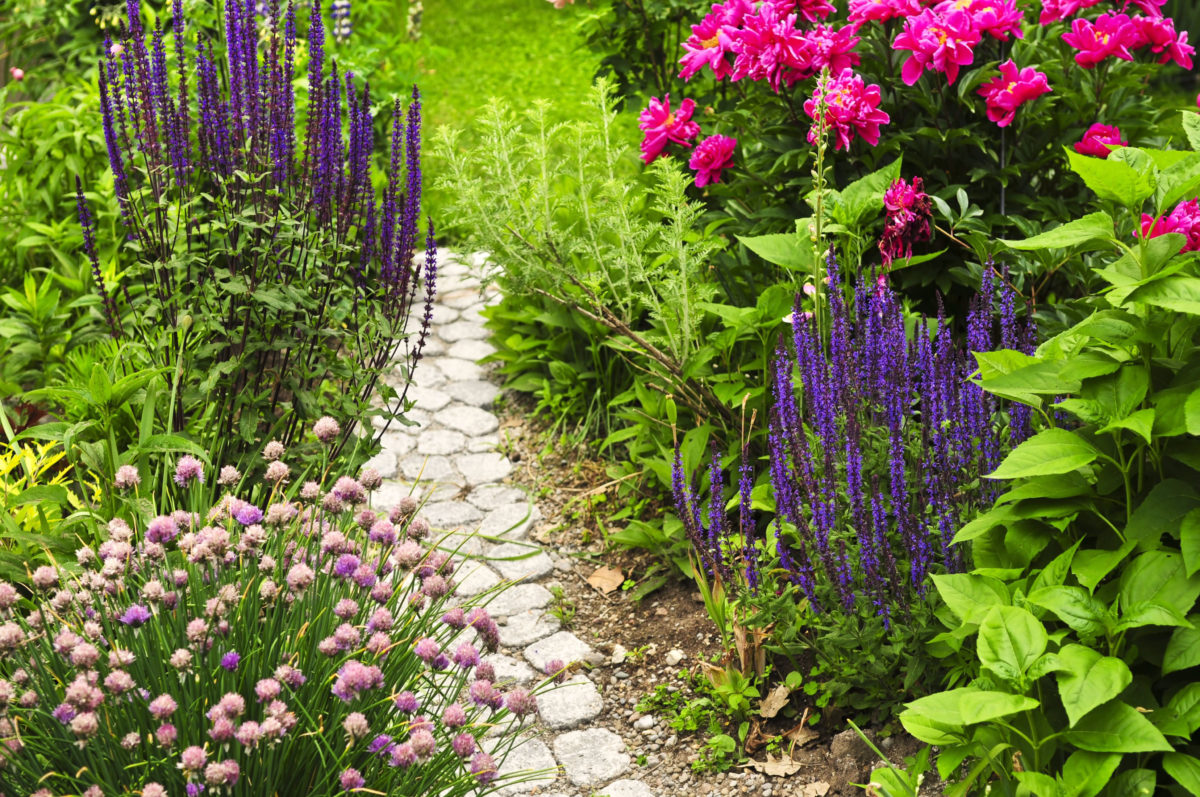
Summer pruning strengthens the plant for next season’s growth.
This benefit of summer pruning applies to short-lived perennials such as foxgloves and lupines. Even though these energy-intensive plants won’t rebloom, cutting down their spent blooms and foliage in the summer will encourage the plants to grow a new set of leaves whose only job for the rest of the season will be to strengthen the plant for next year’s display.
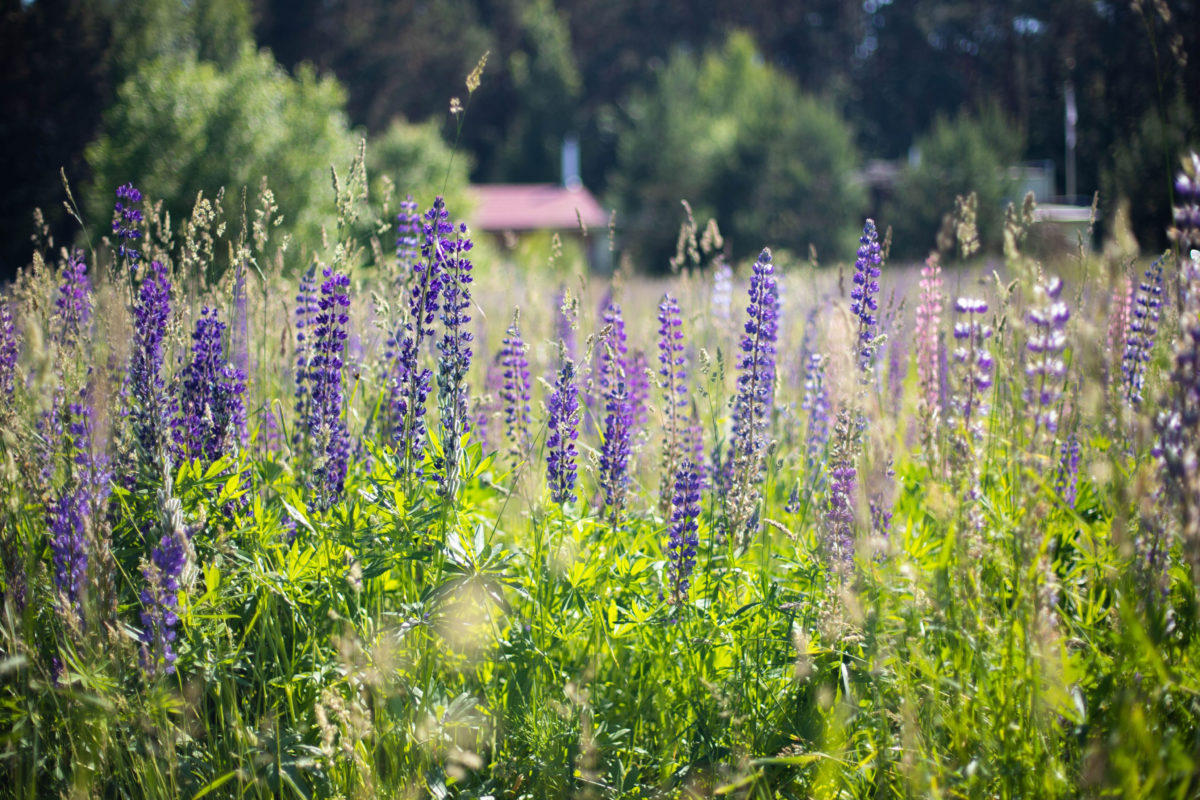
Before you pull out the shears and put on your gardening gloves, here are a few things you should know before you start pruning perennials in summer.
Timing matters.
If possible, wait for a cooler summer day to prune your perennials. A lot of moisture loss happens when you cut into a plant’s stalks and leaves, which is only exacerbated by high temperatures. If there’s no reprieve from the summer heat in sight, do your pruning early in the morning or late in the evening, when the temperature drops.
Keep a light hand.
If you’re experiencing a particularly dry and hot summer, keep your pruning light and don’t remove too much of the foliage. Even if the leaves look drab and brown, they still provide shade for the root structure in times of drought. With not much rain on the horizon, your plant won’t start sprouting new leaves after you remove the old ones.
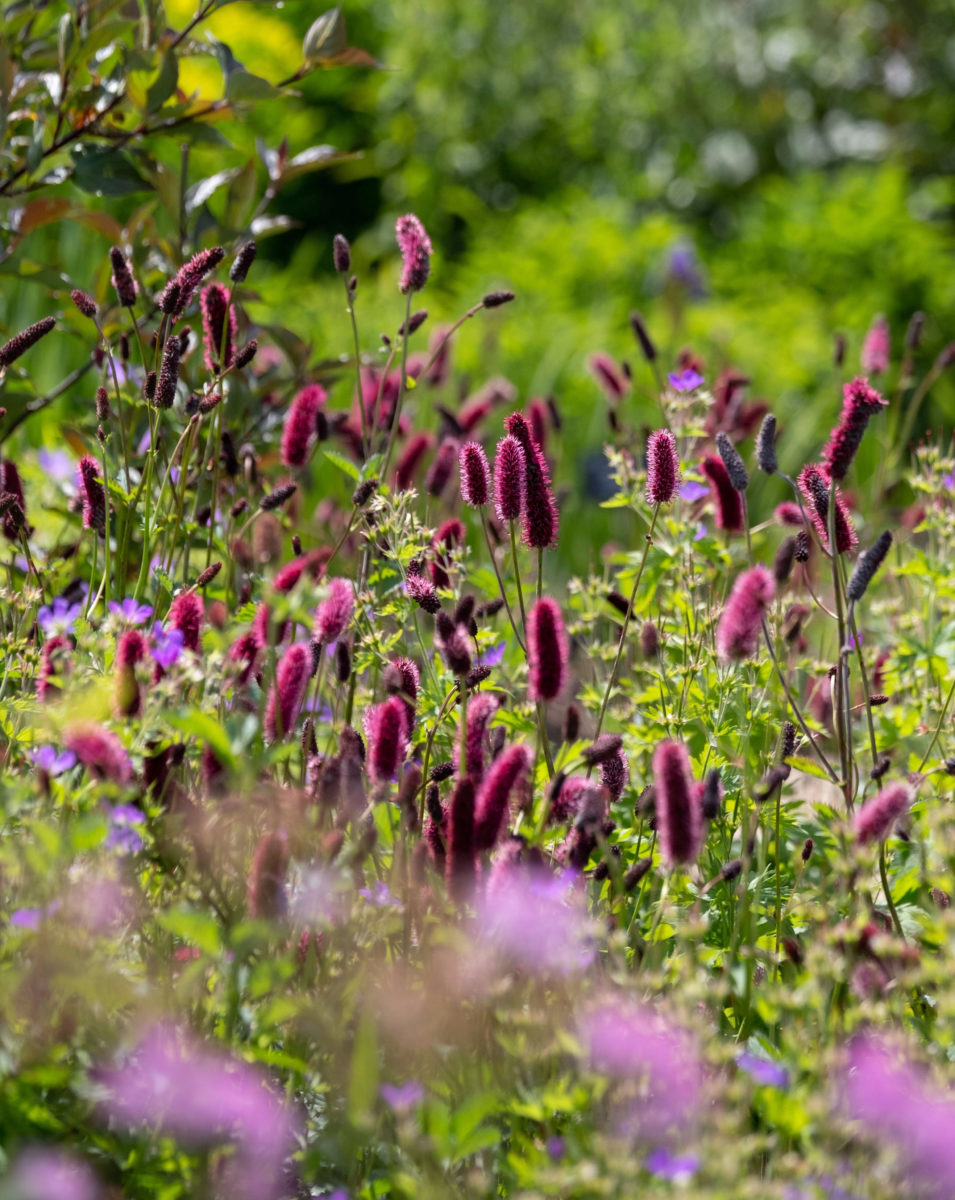
Summer pruning is ornamental, not structural.
Think of it as housekeeping, not house renovating. Summer is not a good time to do any hard pruning – cutting the plant down to its basal structure – or reshaping of the plant. Save the hard pruning for fall or (even better) the following spring.
Leave the young ones alone.
If you’ve just planted the perennial this year (either from seeds or starters), avoid pruning it in its first growing season. Because your plant didn’t have enough time to establish a strong root structure, it might not bounce back post-pruning.
Keep feeding after you prune.
Apply nutrient-rich compost after pruning. Liquid fertilizer is often too strong for a plant that has lost a good amount of its mass. On the other hand, rich compost breaks down slower and provides the trimmed-down plant with nutrients at a more manageable pace.
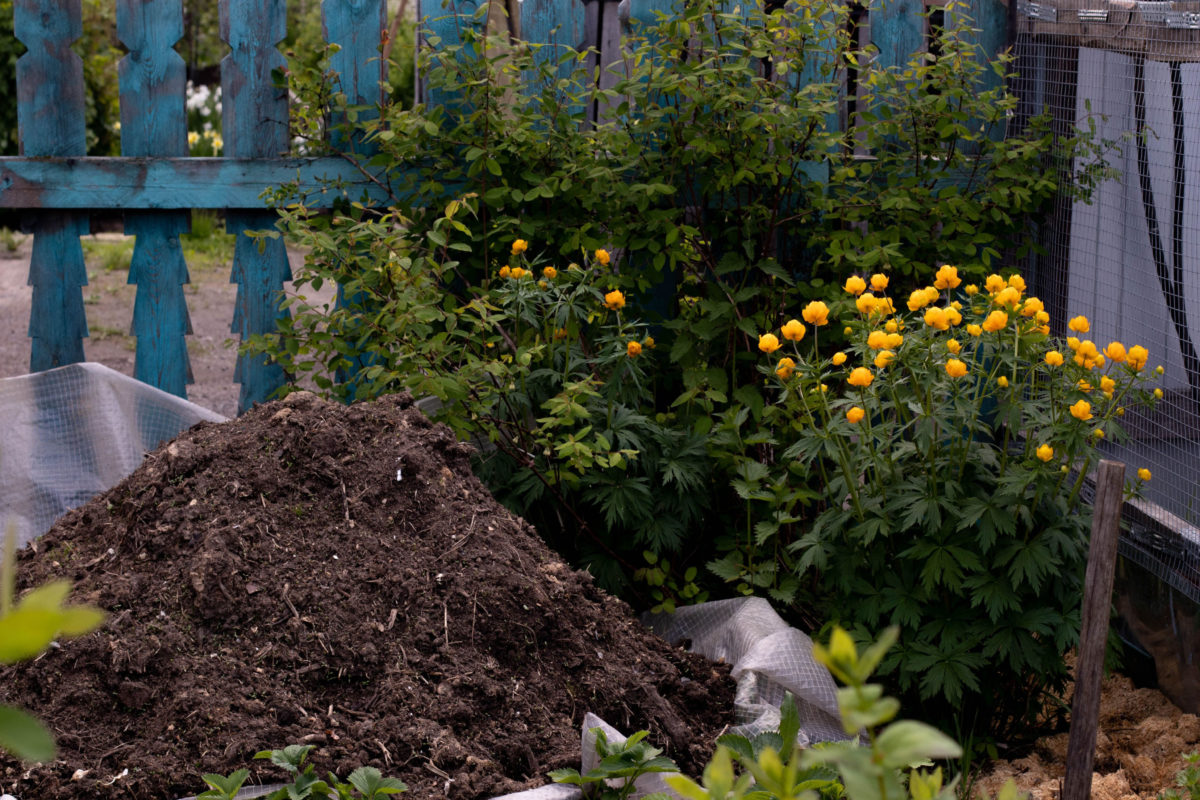
Keep watering.
Always water your plants after you’ve pruned them. Consistent watering will help your plants bounce back faster and help mitigate the loss of foliage.
You’ll thank yourself later.
Light pruning in the summer allows you to skip fall pruning and postpone this gardening job until the following spring.
You’ll notice that a lot of the plants on this list are also mentioned on the pruning in spring list, and that’s not just a coincidence. Once you’ve done your summer pruning, feel free to leave the plants alone to overwinter as they are. We’ve already covered the benefits of letting your summer perennials overwinter in this article, but in a nutshell, you’re providing valuable habitat and an important food source for wildlife in your garden. Plus, since you’ve already done a summer prune, your garden is less likely to look messy and unkempt throughout the winter months.
Don’t touch these plants.
Whatever you do, do not prune shrubby perennials that have already set buds for next year. So don’t be tempted into cutting rhododendrons, camellias, azaleas or gardenias in the summer, unless you’re prepared to be sorely disappointed next spring. The window for pruning them has already closed by mid-summer, so you’ll have to wait until next year’s blooms are gone before you remove anything but dead or diseased leaves and branches.
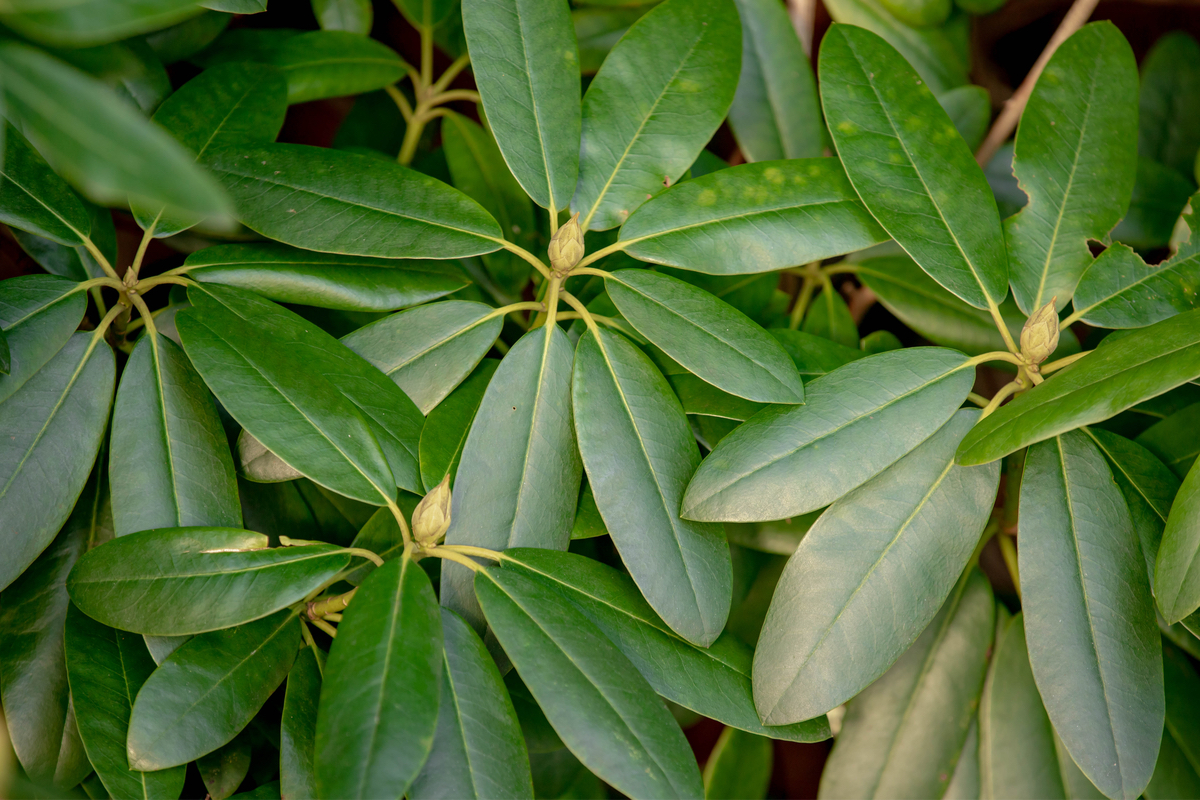
Here are the most popular perennials that you can prune in the summer.
1. English Lavender (Lavendula angustifolia)
First, start by making sure that what you’re growing in your garden is indeed English lavender (Lavendula angustifolia) and not French lavender (Lavendula stoechas). This is especially important if you live in a temperate or colder climate, because the French variety (sometimes also called Spanish lavender, due to its Mediterranean origins) will not rebloom if you prune it in the summer.
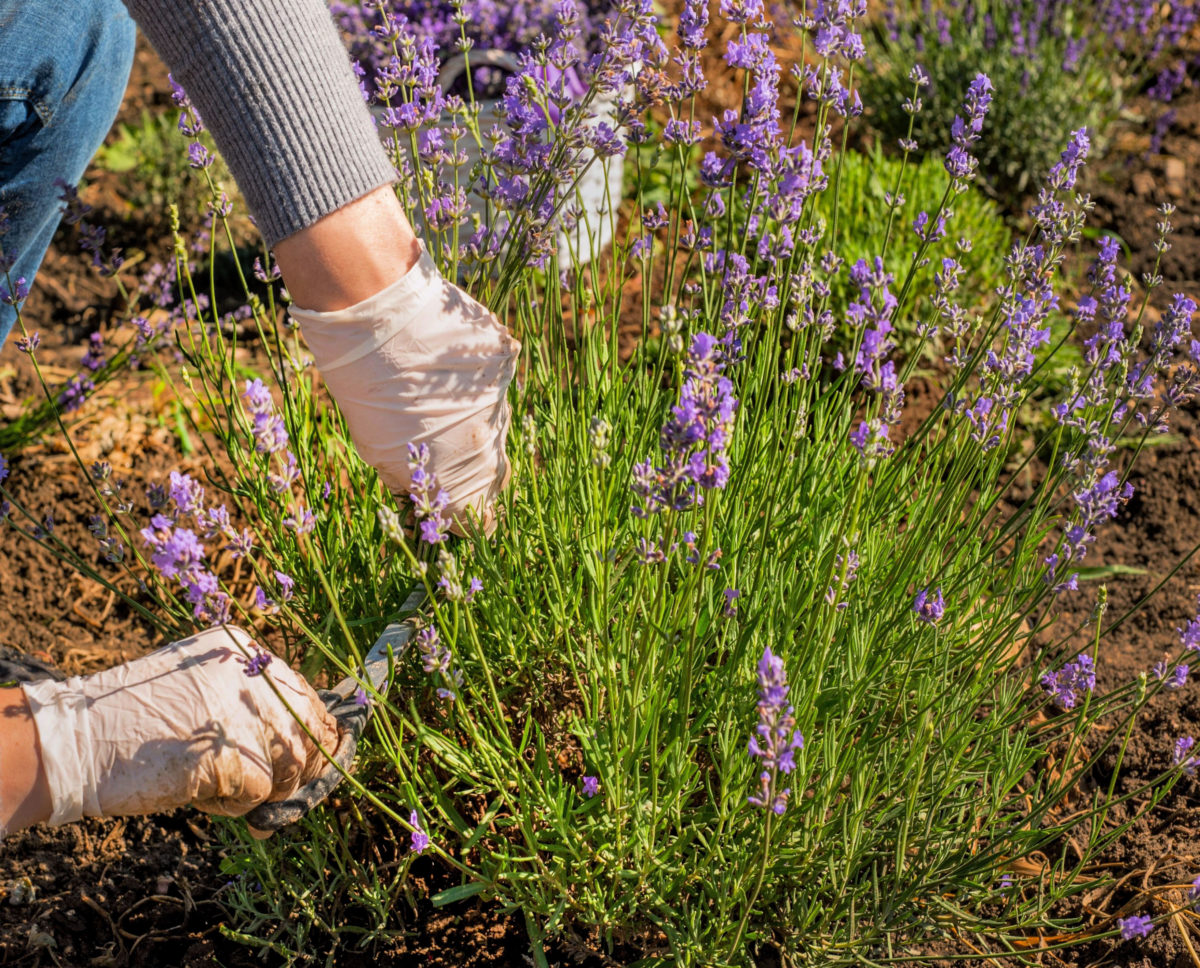
Luckily, the less fussy English lavender does not have this problem. Once the blooms are spent and turn gray, you can remove them, as well as the top third of the foliage. Cut right above a leaf node if you want to encourage compact growth.
You can leave the foliage that you’ve removed on the stem and dry it upside down in small bunches. Dry lavender leaves can be used in linen sachets to keep your linen closet smelling fresh or as bath sachets for a relaxing mid-winter soak.
2. Lemon balm (Melissa officinalis)
As a member of the mint family (Lamiaceae), lemon balm has the same fast-growing pattern, although it doesn’t generally spread by sending underground shoots. So if you like the flavor and fragrance of mint, but want to avoid the maintenance that comes with planting a bully, lemon balm is a good compromise.
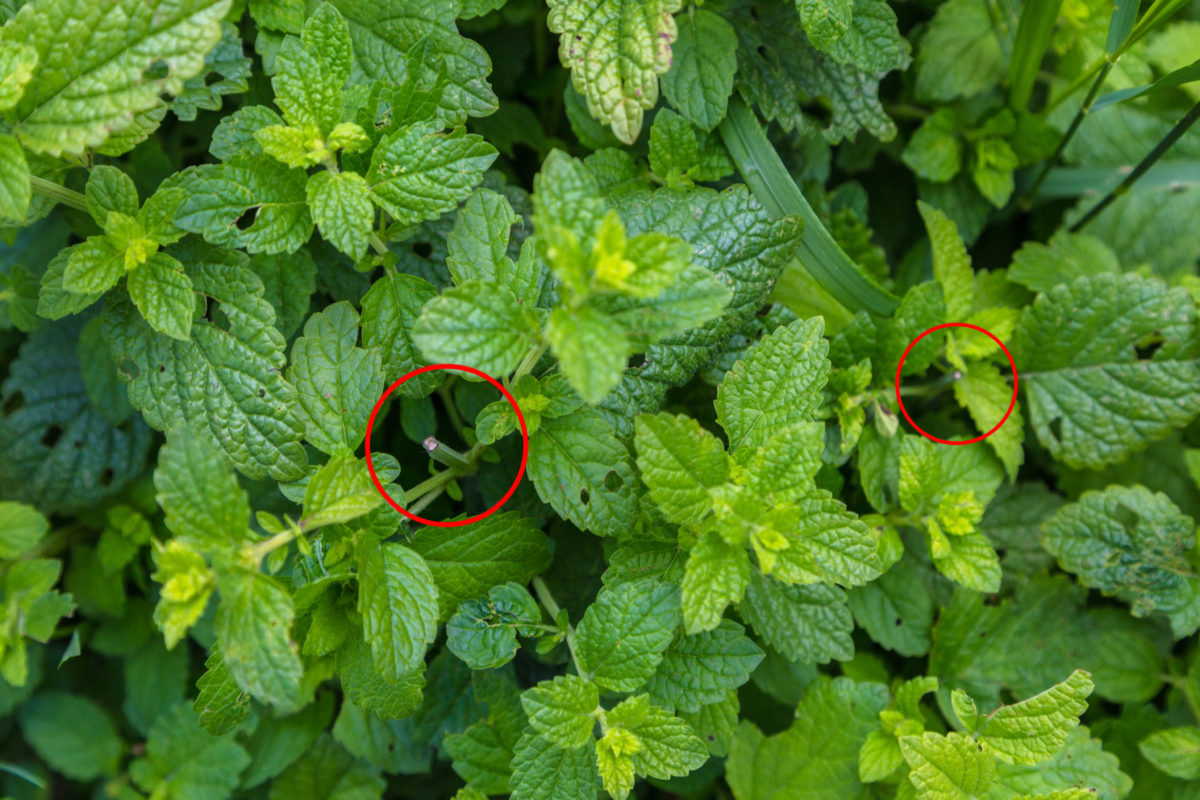
I’m a big fan of its fresh lemony taste, so I harvest lemon balm throughout the summer. I use it in salads, lemonades and ice tea, as well as an air freshener (tied up in neat little bunches around the house and in all my closets).
But no matter how much lemon balm I pick to use fresh, I can’t seem to outpick the fast growth. At that point, I let it bloom (for the bees) while still harvesting the larger leaves that grow at the base of the plant. Once the flowers start drying, but before they start setting seed, I prune about two thirds off the top of the plant (including the spent blooms). I dry the parts that I’ve pruned and save them for winter tisanes and salves.
Depending on what kind of summer weather you’ve been having, you can prune lemon balm as late as August and it will bounce back strong and rebloom to regale you with its fragrance until the end of the growing season. You can cut it back in the fall, but it’s better if you leave it standing until spring. Because it’s a woody plant, it makes the perfect hibernation hotel for beneficial insects during the cold winter months.
3. Yarrow (Achillea millefolium)
Yarrow plants, especially mature ones, tend to get a little bit messy, unruly and often floppy. Yarrow is an excellent plant for pollinators, but once the flowers are spent, they can keep hanging on to the plant for weeks before they finally dry and start falling off. Some gardeners like the sculptural shape of dry yarrow, but I find it more appealing in the winter garden than mixed with blooming plants in my summer borders. This is why I give yarrow a mid-season prune.
You can get yarrow to rebloom if you remove the spent flowers. Have a look at your yarrow plant. Are there any side-blooms coming up below the dried blooms? Then you can grab the stem between your fingers and snip it right above the baby blooms.
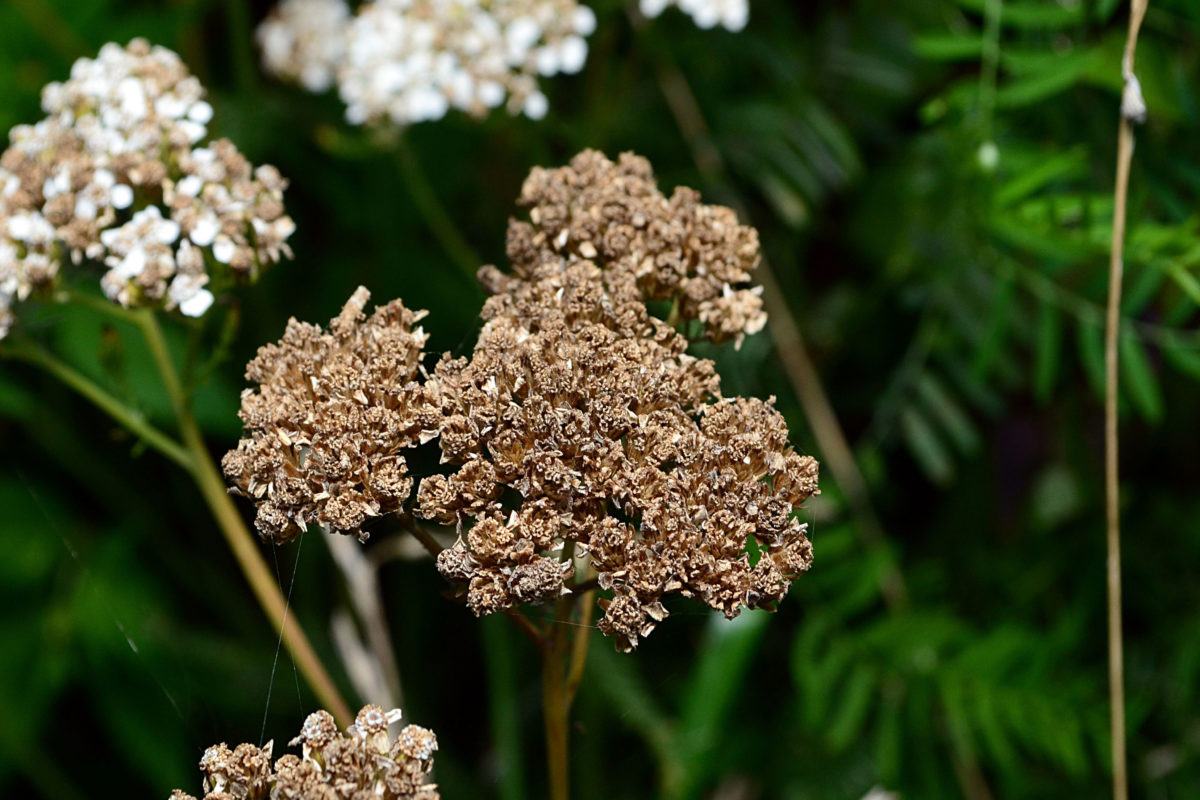
But you can prune yarrow in the summer even if there are no new blooms forming (just yet), and you can cut it even lower down the stem without fear that you’re removing new growth. If your season is mild and relatively long, you can trim your yarrow plants as late as mid-August and expect a second bloom before the onset of the cold season.

However, yarrow plants take at least a season to get properly established. So if you’ve just planted your yarrow this year, only prune it in the summer if the plant looks vigorous enough to handle it. If in doubt, just stick to deadheading the spent blooms.
4. Mint (Mentha)
I’m a big fan of mint and all the ways you can use it in the kitchen. So at any given time, I have at least three or four mint varieties growing in my herb patch. Currently, I have Moroccan mint, peppermint and green-apple mint happily lavishing in the garden. But even when I try to keep up with consuming it, my mint can get a little bit out of hand. That’s when I know it’s time for the secateurs to come out of the shed.
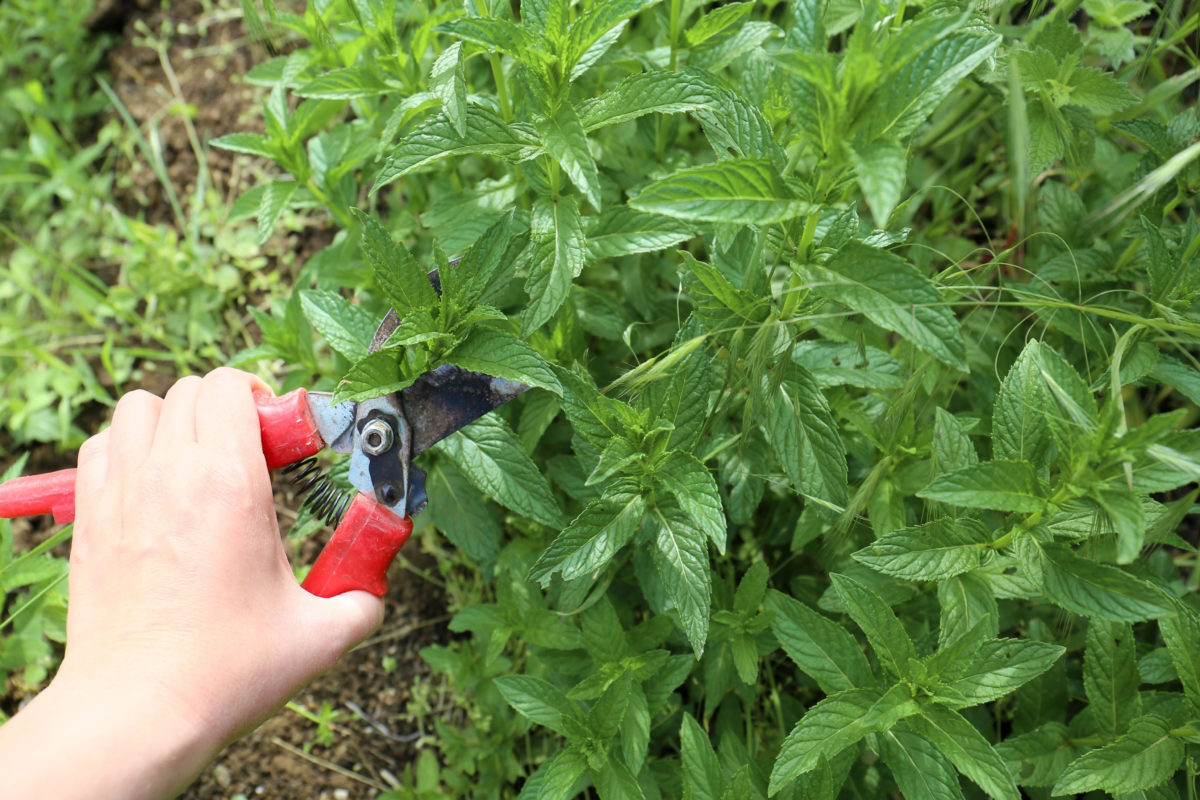
Since mint is such a fast-growing herb, you can prune it in summer both before and after it has bloomed. In fact, I prune mine at least three times a season, just to keep it in check. I take off about a third of the height of the plant every time, making sure I prune above a leaf node to keep the plant growth compact.
The wonderful thing about pruning herbs, and you’ll see this as a theme in this article, is that you can immediately consume the foliage that you’ve removed, or you can dry it up and store it for winter. Have a look at this article from Cheryl on Rural Sprout for a few more ideas on how to use up your mint harvest.
5. Hyssop anise (Agastache foeniculum)
When I talk about hyssop anise with other gardeners, I like to refer to it as “the undercover plant.” That’s because, despite its name, it’s neither hyssop (Hyssopus officinalis) nor anise (Pimpinella anisum). But I guess calling it agastache never sounded too appealing. It is, in fact, a member of the mint family, although it doesn’t have an aggressive spreading pattern.
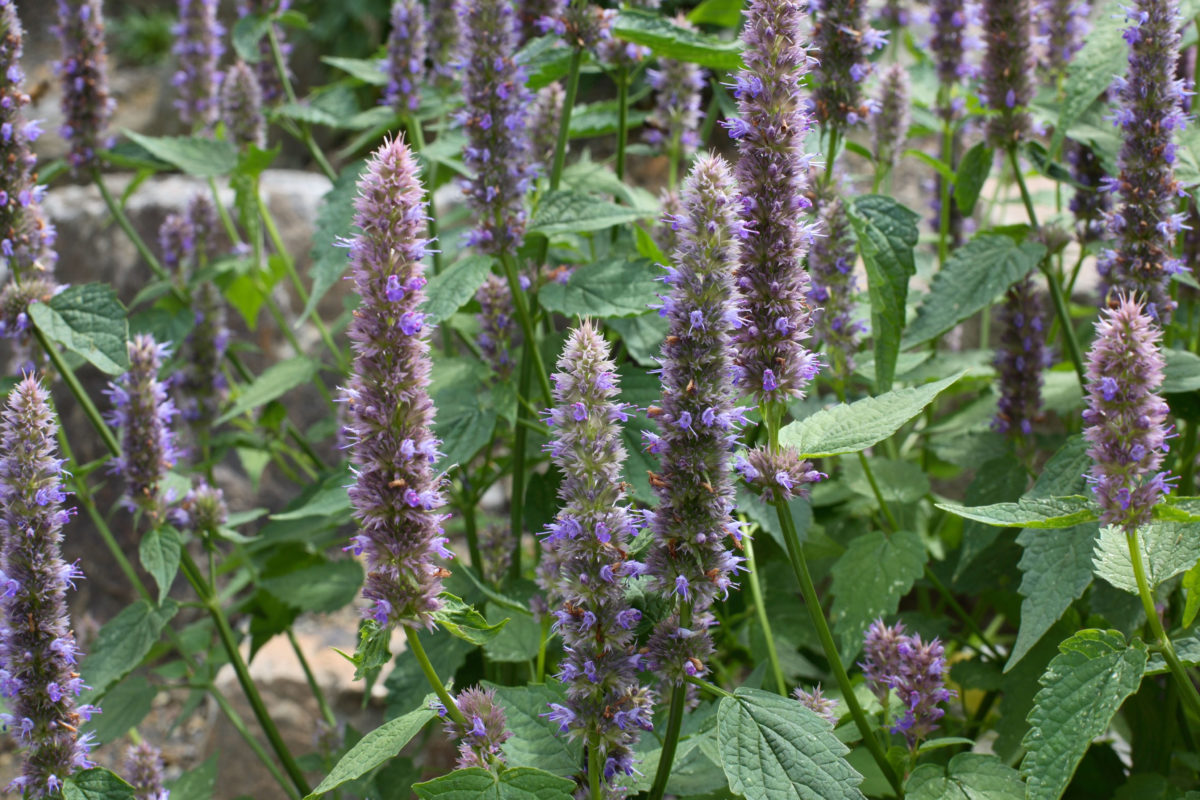
Hyssop anise is native to the Midwest and all the way north to the prairies of Canada, and it’s an important addition to pollinator gardens. It’s usually in full bloom by early July, but you can encourage a second bloom by giving it a light trim once the first set of flowers is past its prime. Wait for the full bloom before you remove the flowers in order to allow pollinators to harvest all the richness of this plant.
Don’t throw away anything you’re taking off this plant though. You can add the leaves to salads, stews and wraps, or you can infuse them in herbal teas (tisanes).
If your harvest is too large, you can even dry the leaves for winter brews. The seeds are also edible, so you can add them to cookies, bagels or smoothies. Hyssop anise has a mild licorice taste with a light citrusy aftertaste, although some people perceive it as closer to Thai basil or tarragon.
6. Catmint (Nepeta)
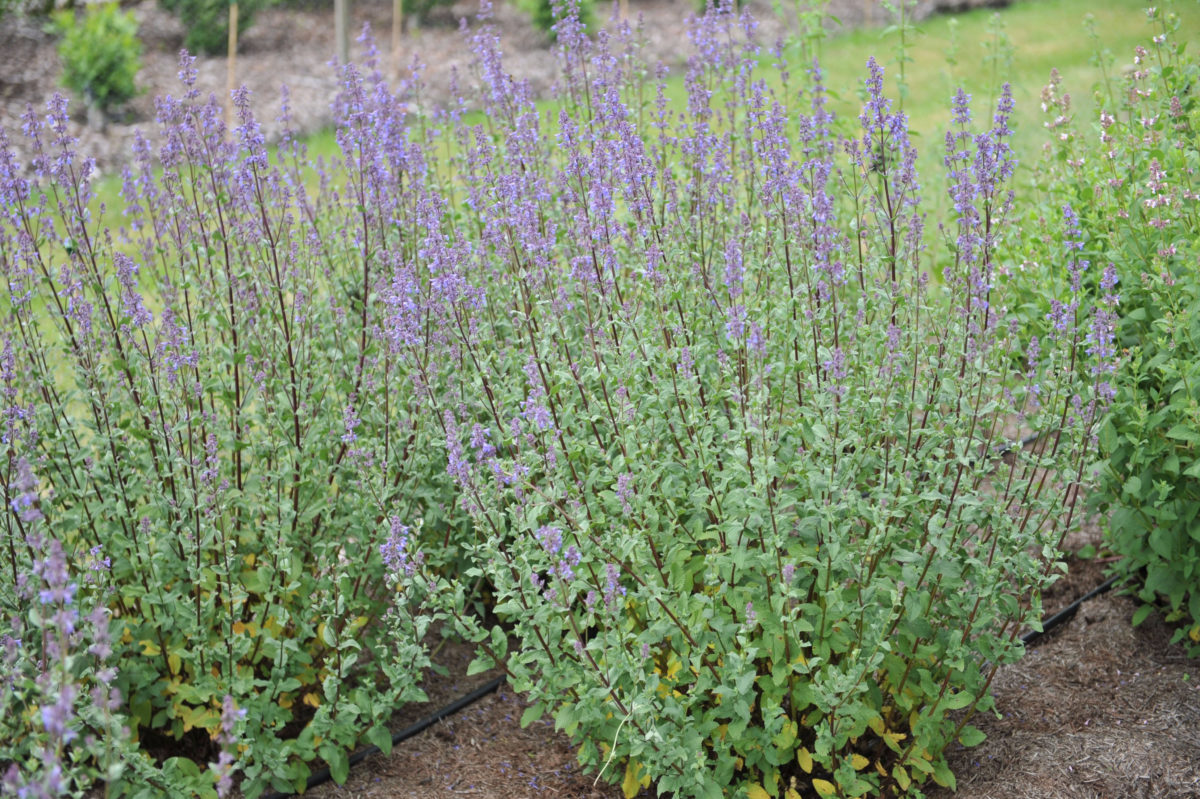
If you have neighborhood cats roaming around your backyard, you’ll know that keeping your nepeta under control won’t be a problem in the summer. Most cats (though not all) are attracted to the fragrance of the catmint leaves and they’ll be more than happy to frolic around and roll in it as soon as the leaves emerge in the spring.
If you don’t have the help of feline friends, you’ll have to keep nepeta in check yourself. But don’t let this discourage you from giving it a try in your garden. Usually a mid-summer pruning session will do the trick.
In my opinion, nepeta is an underrated plant, and the benefits of growing it outweigh the maintenance it needs. Speaking of benefits, nepeta can grow very well in dry soil and part shade. It fills up borders and beds, can be grown in pots, and can grow from seed much more reliably than other herbs. The blue, purple, or white flowers act as a mid-summer snack bar for pollinators.

Wait until the first flush of blooms has dried out before you prune this perennial in the summer. You can give it a light prune, just removing the dead seed heads, or you can cut down to the first set of side shoots (as you go along the stem from the top). There’s a high chance that your nepeta will have a repeat bloom this summer.
7. Lantana
Lantana is a fast-growing plant with a steady, reliable blooming pattern. If you have a lot of garden space that needs to be filled, lantana is a safe bet. But this also means that, if you’re gardening in a smaller perimeter, your lantana will quickly take over its allocated space.
Luckily, you can prune back lantana several times during the summer, each time removing no more than the top third of the plant. Don’t remove the flowers that are still in bloom, since lantana is an excellent source of food for butterflies and hummingbirds.
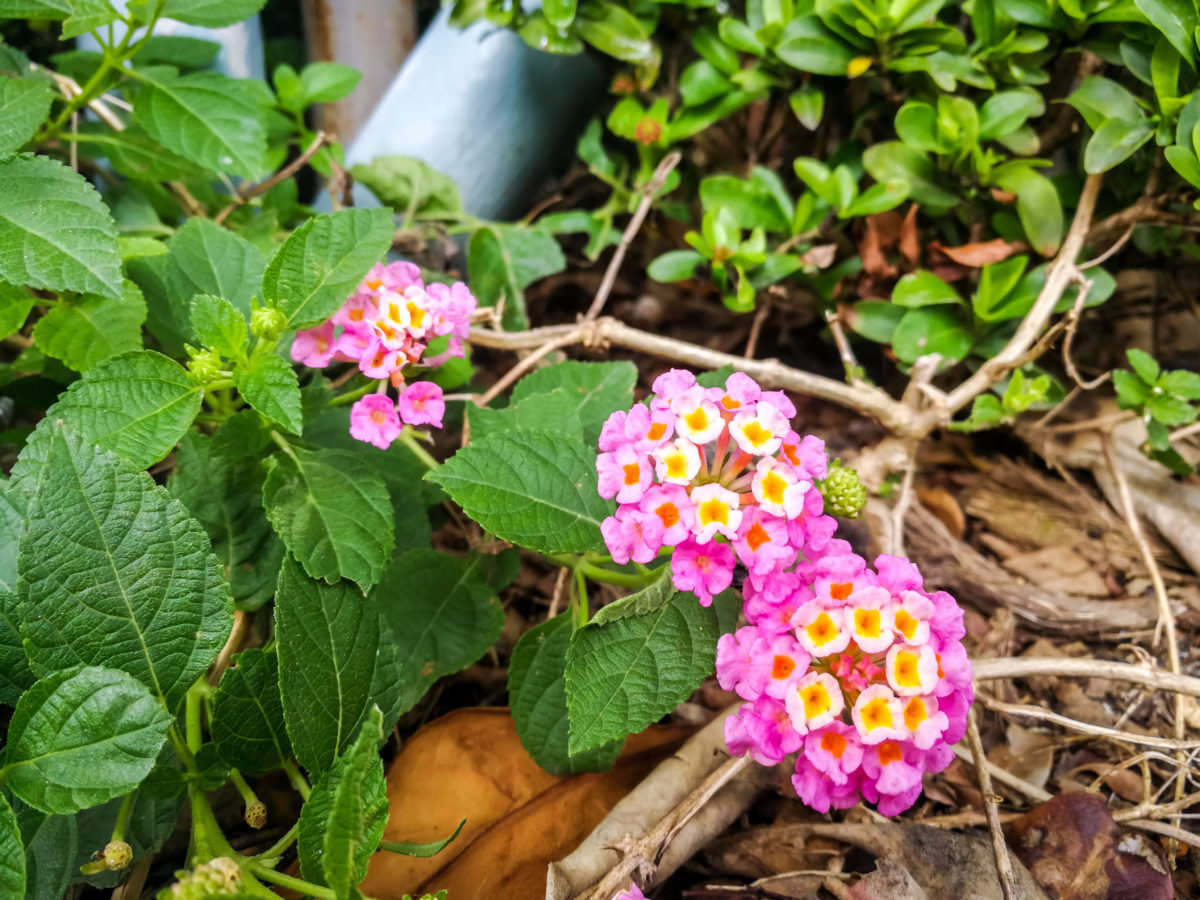
But once the blooms are spent, you can remove them and the stalk that they’ve grown on to encourage repeat blooming. Since the foliage of the lantana plant can be scratchy to touch and have a pungent sage-like scent that some people don’t like, make sure you always wear gardening gloves when you prune this plant.
If you’ve been keeping up with summer pruning, there’s no need to prune your lantana in the fall. In fact, because lantana is sensitive to cold temperatures, you should leave the foliage on over winter in order to mulch and protect the root structure. You can cut back your lantana again in spring before new growth starts to emerge.
8. Perennial geraniums
Perennial geraniums (also known as hardy geraniums or herbaceous geraniums) are early-season bloomers.
If you keep up with deadheading geraniums (so just removing the spent blooms), this will encourage new blooms during the current growing season. You can also trim back the foliage and remove about one third of it in mid-summer without risking the health of the plant.
On the contrary, this will encourage new growth and a new flush of foliage will take its place. If you’re gardening in a warmer climate, you may even have the pleasure of a new set of flowers that will bloom in early fall.
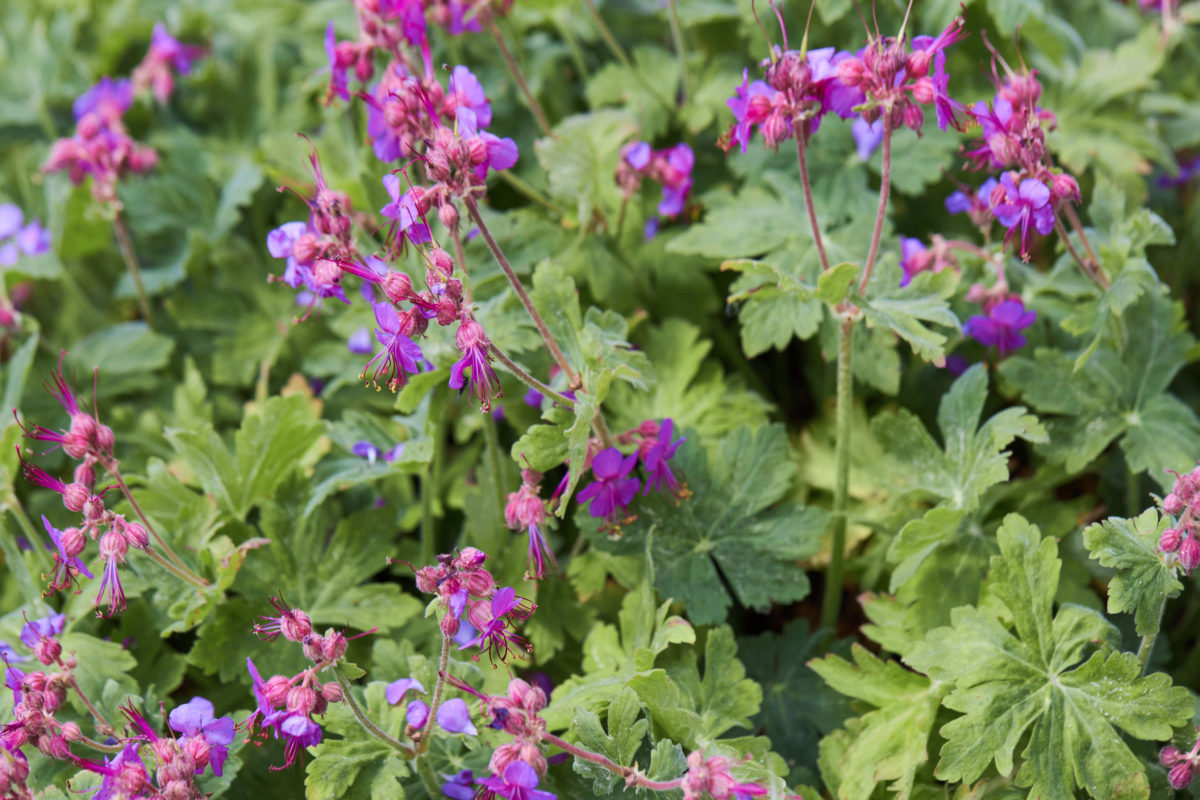
Keep in mind that perennial geraniums, despite their reputation of being hardy, are sensitive to cold weather. So if you get hard frosts and snow in your garden, you should not remove the last foliage of the year until well into the following spring, unless the leaves have been attacked by pests or diseases. Geranium foliage acts as the perfect insulation for the root structure of this plant.
In spring, just remove the brown leaves to allow the new growth to sneak through and cover the old foliage. You can remove the old basal foliage when the temperatures have warmed up enough and the danger of frost has passed.
9. Lupines (Lupinus)
If I could vote on extending the bloom time of only one perennial, it would definitely be lupines (with foxgloves a close second). There’s just so much anticipation watching the foliage grow and expand in late spring and early summer, but the blooms are so short-lived. Blink and you’ll miss them. Or in my case, go on vacation for a couple of weeks and you’ll miss them.
If you want to expand your lupine’s very short blooming window, you have to watch them like a hawk. You can prune back the first flowerhead on each stem to encourage more blooms to open up. You can also leave it on the stem and only cut it back when the bottom half of the bunch has faded.
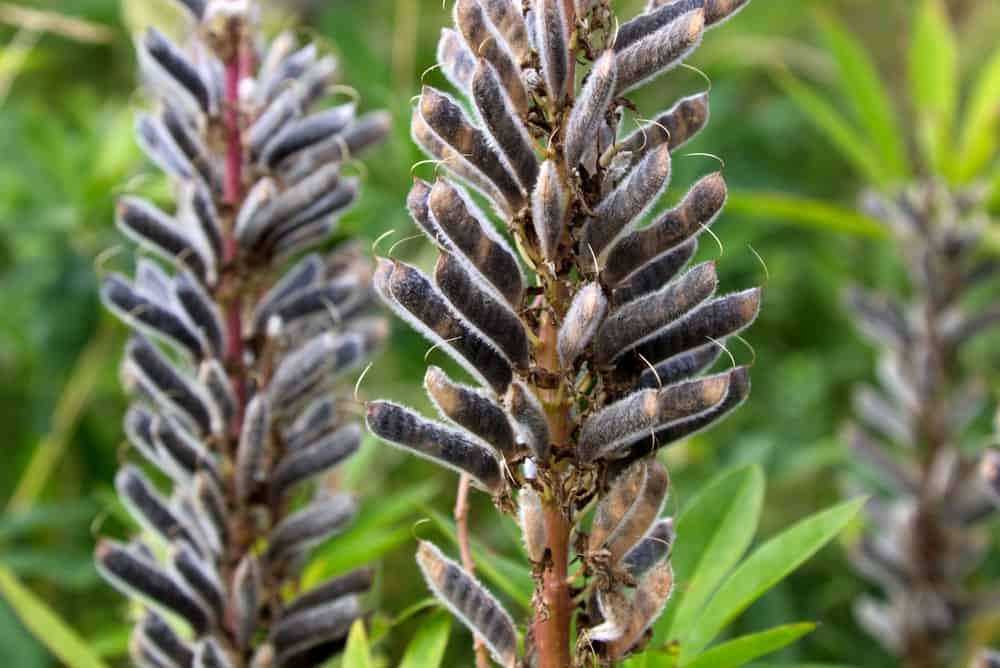
Once the blooms are spent, lupines will use up a lot of energy for seed production. You can let a few heads go to seed if you want to save the seeds to expand your collection or share your lupine love with friends. Otherwise, you can remove the seed heads and most of the foliage.
Keep watering the plants and apply rich organic compost around the base to feed it and mulch it. Soon, you’ll see new leaves emerging from the base of the plant that will be collecting energy for the following growing season. Unfortunately, you won’t be getting any new flowers this year.
10. Lady’s mantle (Alchemilla mollis)
If you ask me, lady’s mantle is another understated plant. With its lime-green flowers and soft, velvety leaves, this old-fashioned perennial should be making a comeback.
It is easy to get started from seed, and once you do, it’s about as low-maintenance as it gets. It’s also somewhat drought-tolerant (but don’t let the young ones dry out too much), so perfect for gardeners that don’t like fussing too much over plants during hot dry summers.
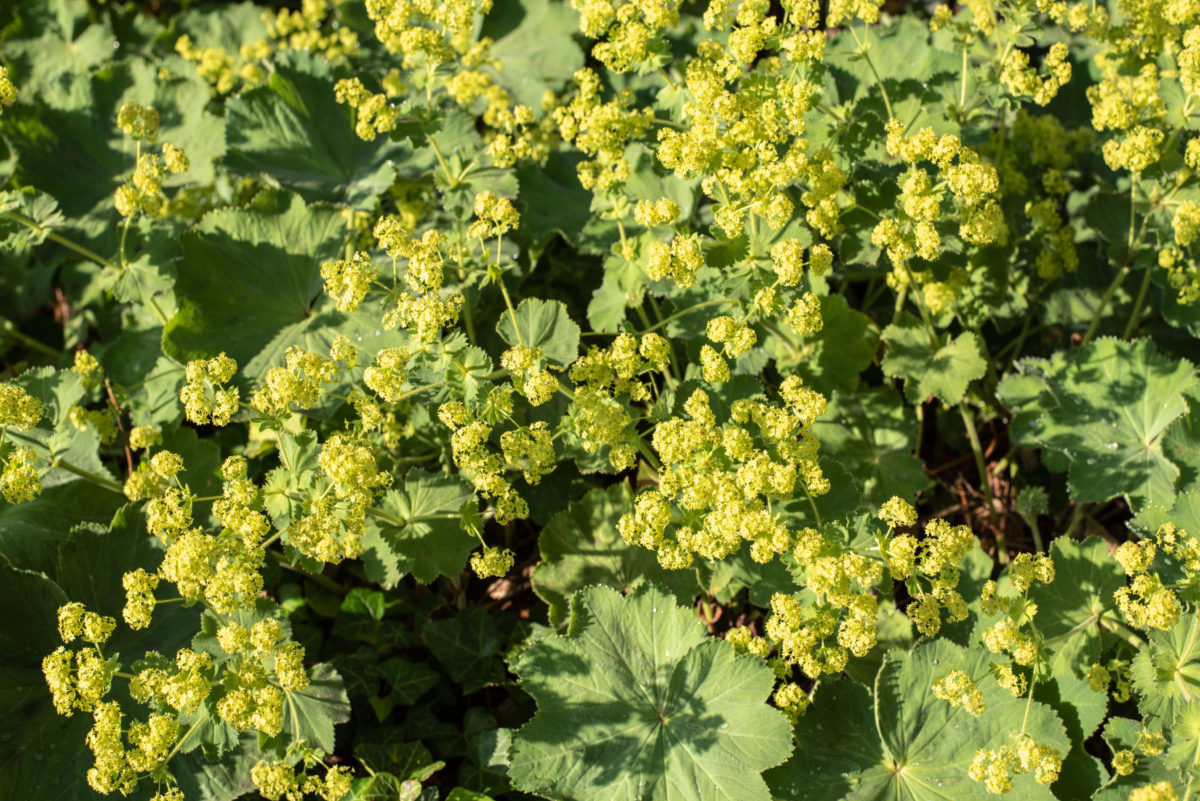
Maybe because of the green flowers, some gardeners prefer to remove the blooms and focus on the foliage. If you choose to prune the blooms before they’re spent, you can dry them and use them as decoration or infuse them in an herbal tea.
Older plants tend to flop halfway through the summer season, so you can also give leaves a good trim. Start by removing the older leaves that are losing vigor and color. Cut them back to the base to make room for younger leaves.
11. Oriental poppy (Papaver orientale)
This summer pruning advice doesn’t apply to all poppies, only to the sturdy oriental variety that towers like a red lighthouse above your early summer garden.
Because it’s such an early bloomer, the oriental poppy is also among the first to leave the summer party, leaving behind yellow or brown foliage that looks rather worse for wear. Poppies prefer cool temperatures, so once the heat of the summer sets in, there’s not much reviving them.
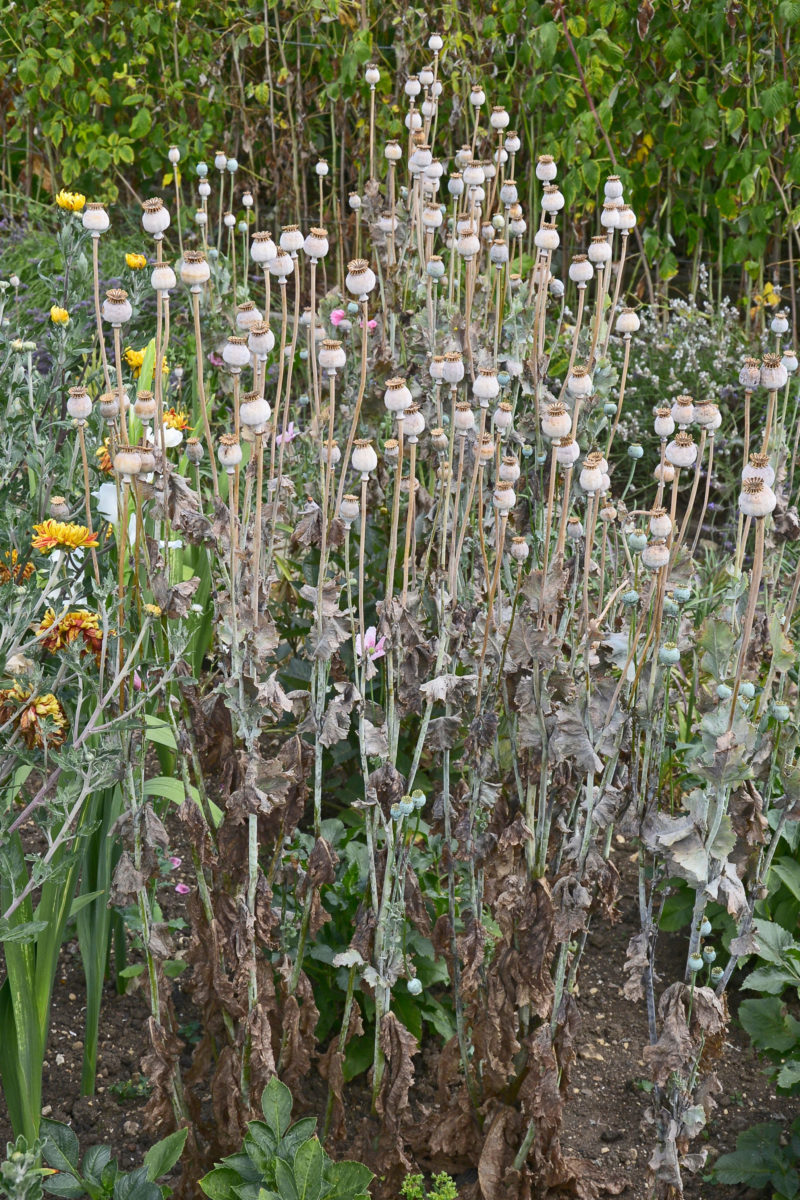
Fortunately, perennial poppies have a pretty hardy root structure, especially the older and more established plants. So even though a heatwave will make the entire plant look dead, you can revive it by giving it a hard prune in the summer.
Cutting back oriental poppies may have one of two possible outcomes, depending on factors such as access to water, sunlight and rich soil. Your poppies will either become dormant (in this case, remember to mark the roots so as not to accidentally disturb them), or they will start putting out a fresh set of leaves. However, poppies will not rebloom after pruning. But you’ll see them popping up again even stronger the following spring.
12. Primroses (Primula vulgaris)
Just like poppies, primroses are spring bloomers. There are hundreds of species and cultivars available to gardeners, so before you prune them, make sure you have a hardy perennial on your hands.
English primrose varieties, the most common in home gardens, will bloom reliably during the cold spring season, but will not rebloom once deadheaded. However, the foliage makes a nice low-border filler for the rest of the growing season.
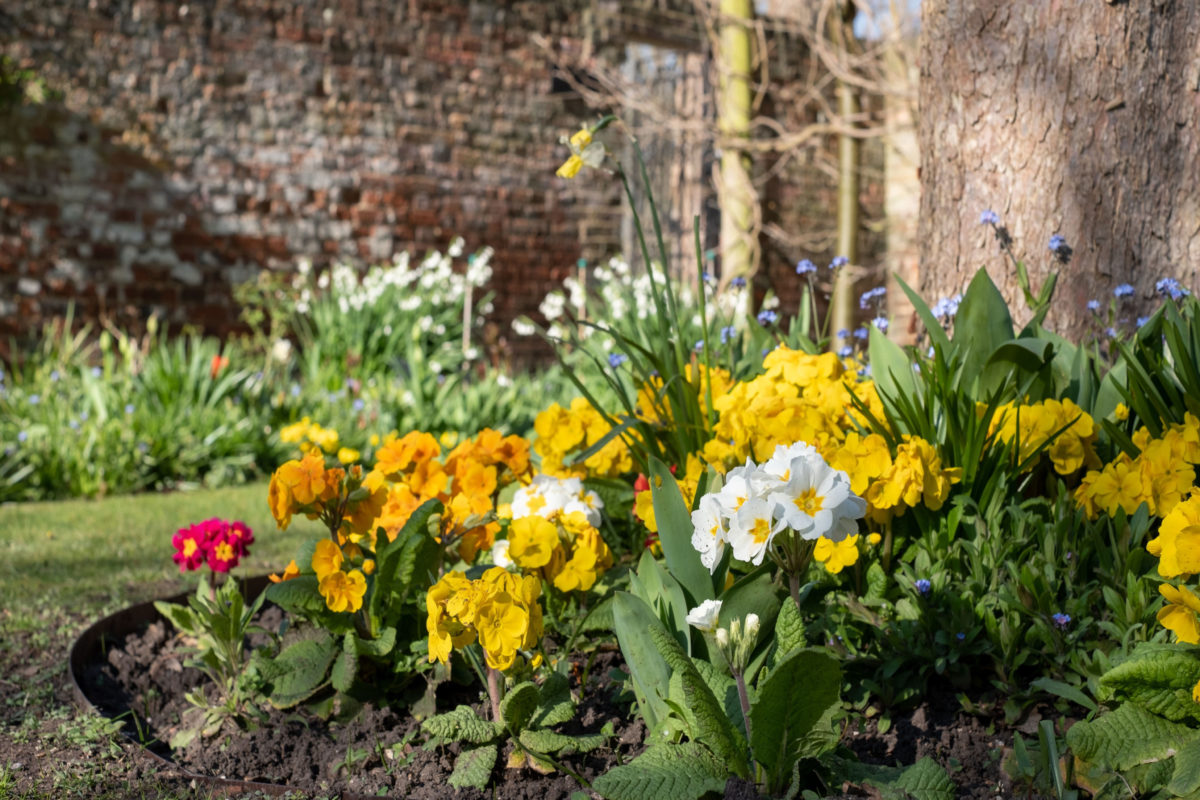
If you want to prune your primroses in the summer, it’s better to gently tug away at the outside foliage that tends to turn brown and dry up. This way, you’ll remove the unsightly leaves while making room for new foliage growth from the middle of the plant. Flowering exhausts this plant, so cutting back the foliage completely is not a good idea. You need to leave the green crown on in order to allow the plant to store enough energy to put out blooms the following spring.
13. Mediterranean spurge (Euphorbia)
Depending on the climate that you’re gardening in, the amount of water, sunlight and fertilizer, as well as the variety that you’re growing, euphorbias can run the gamut from well-behaved neat little lambs to wild and free summer terrors.
This is why the decision to prune euphorbia in the summer is entirely subjective. Some gardeners prefer to let them grow and prune in the fall. While others choose to cut off the spent flower shoots to give the unruly plant a reset.
Cutting euphorbia back close to the ground is necessary if you want as rich a bloom as possible next year.
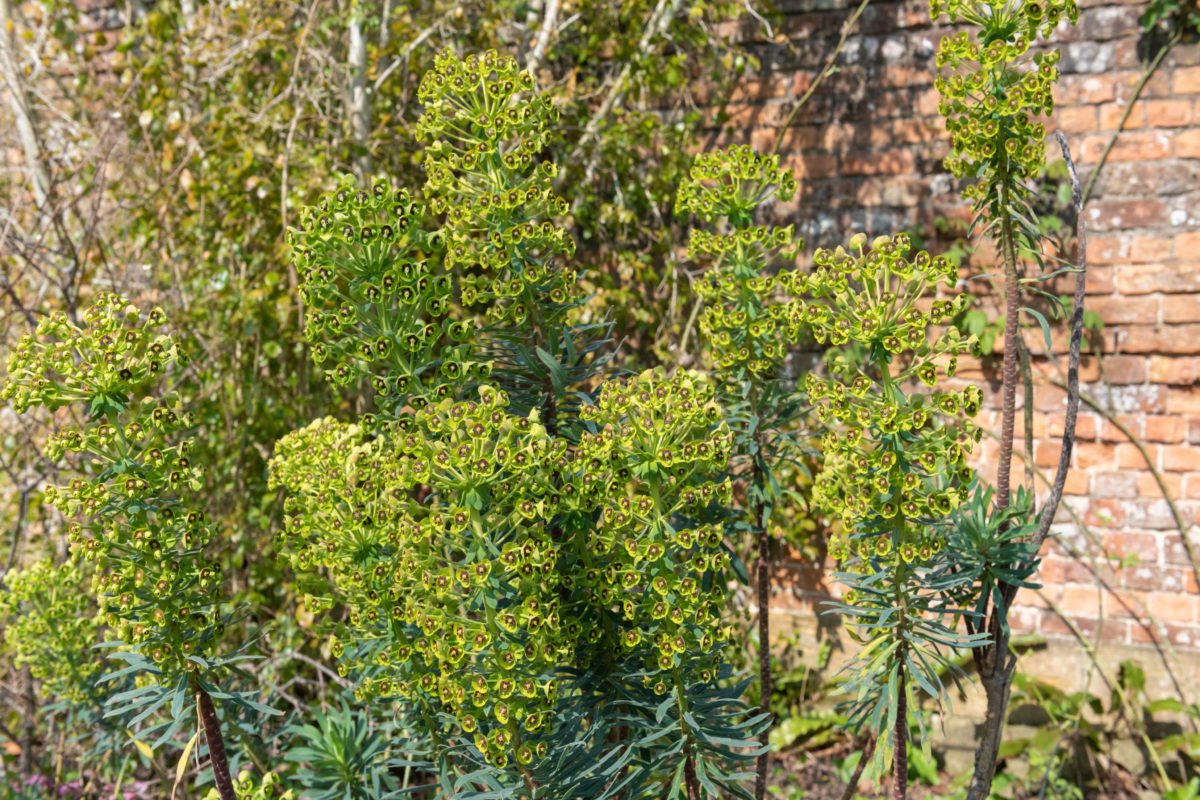
Whenever you decide to prune your euphorbia, keep in mind that the sap that it releases when cut may irritate your skin. Always wear gardening gloves when working with euphorbias and clean the sticky residue off your secateurs as soon as you’re done. Since euphorbia is a tall plant that requires you to reach closer to the base, wearing a long-sleeved shirt is also a good idea.
14. Stiff twinspur (Diascia rigescens)
Even if the name “diascia” doesn’t sound very familiar, you’ve probably seen this plant in somebody’s garden and didn’t know what you were looking at. Tall varieties look like foxgloves or pink lupines from a distance, while the lower-growing varieties may be mistaken for snapdragons.
Diascia is a native of South Africa, but new varieties have been bred to adapt to a wide range of climates. However, this plant will still prefer blooming during the coolness of spring. And if pruned in the summer, it will have a repeat bloom when temperatures drop again in the fall.
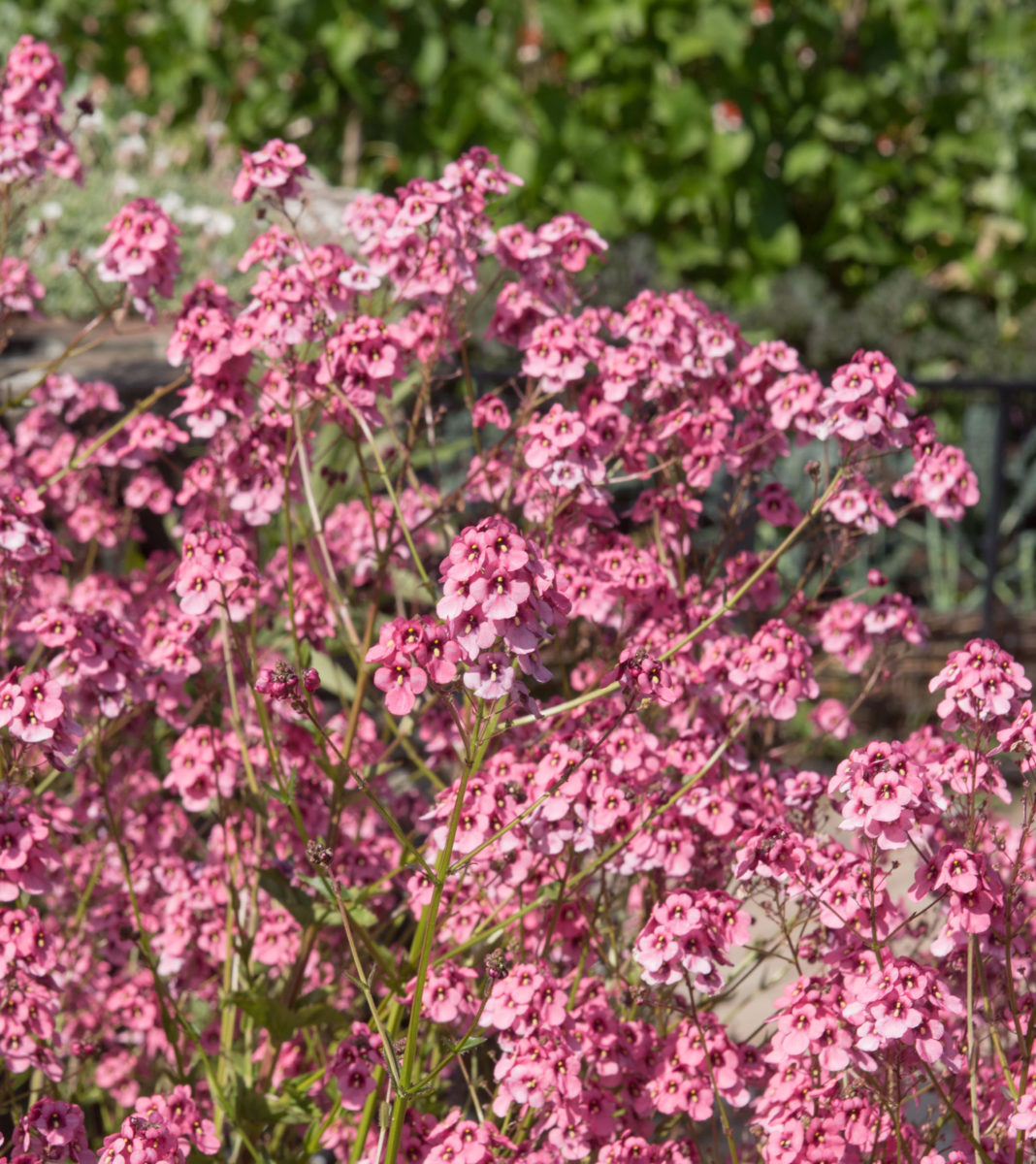
Once the spring bloom has faded, the stiff twinspur tends to get leggy, so you can cut it back by about a third or more. In response, it will put out fresh shoots and more blooms later into the growing season. Even if you cut it back, don’t forget to keep it well watered (but not soggy) if you’re not getting enough summer rain.
15. Santolina
Santolina plants are just so pleasing to the eye. There’s a certain elegance in the silver-yellow color combination that I can’t exactly put my finger on. Some gardeners grow gray santolina for its foliage, some grow it for its fragrance, while others like to dry the yellow flowers for crafts and arrangements.
You don’t need to prune santolina in the summer if you have a young plant. However, if you’ve been growing santolina for a few years, you’ll have noticed that it becomes messy and often the clump splits and spills sideways leaving a gap in the middle. Yup, that’s not a pretty sight in the summer garden. If this happens, you can prune it back to where you see young shoots emerging on the stems (much as you would lavender and rosemary).
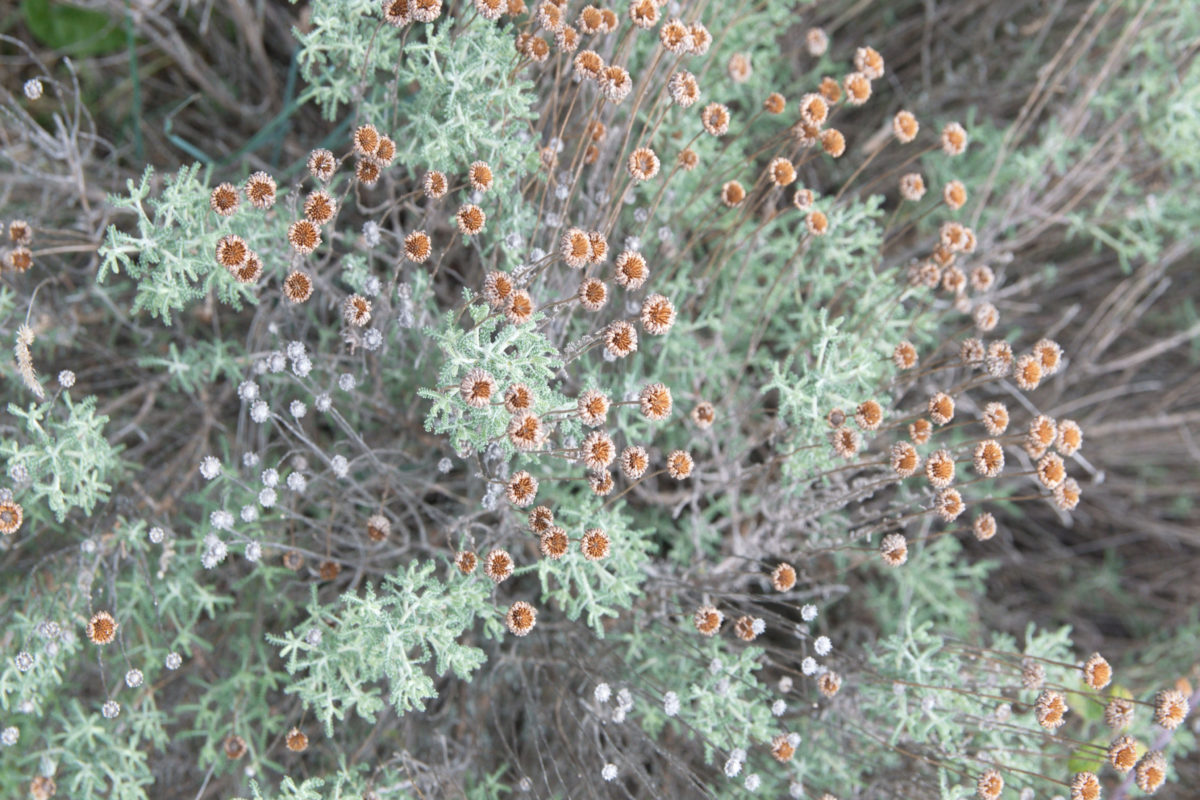
Regular yearly pruning will prevent a fibrous woody mess from forming over the years. Ignore it at your own peril. You can use the cuttings to start new plants for when your santolina will get too old and need to be replaced (which usually happens around the five-year mark).
This article is a good guide to summer pruning, but the list is by no means exhaustive. If you still feel nervous about summer pruning, I encourage you to start small. There’s no need to cut into the entire plant at once. You can experiment with pruning one section of it and notice what happens.
Gardening is so personal to your preferences and the factors that play a role on your site are often very specific. But I think the beauty of gardening is the trial and error nature of it.
